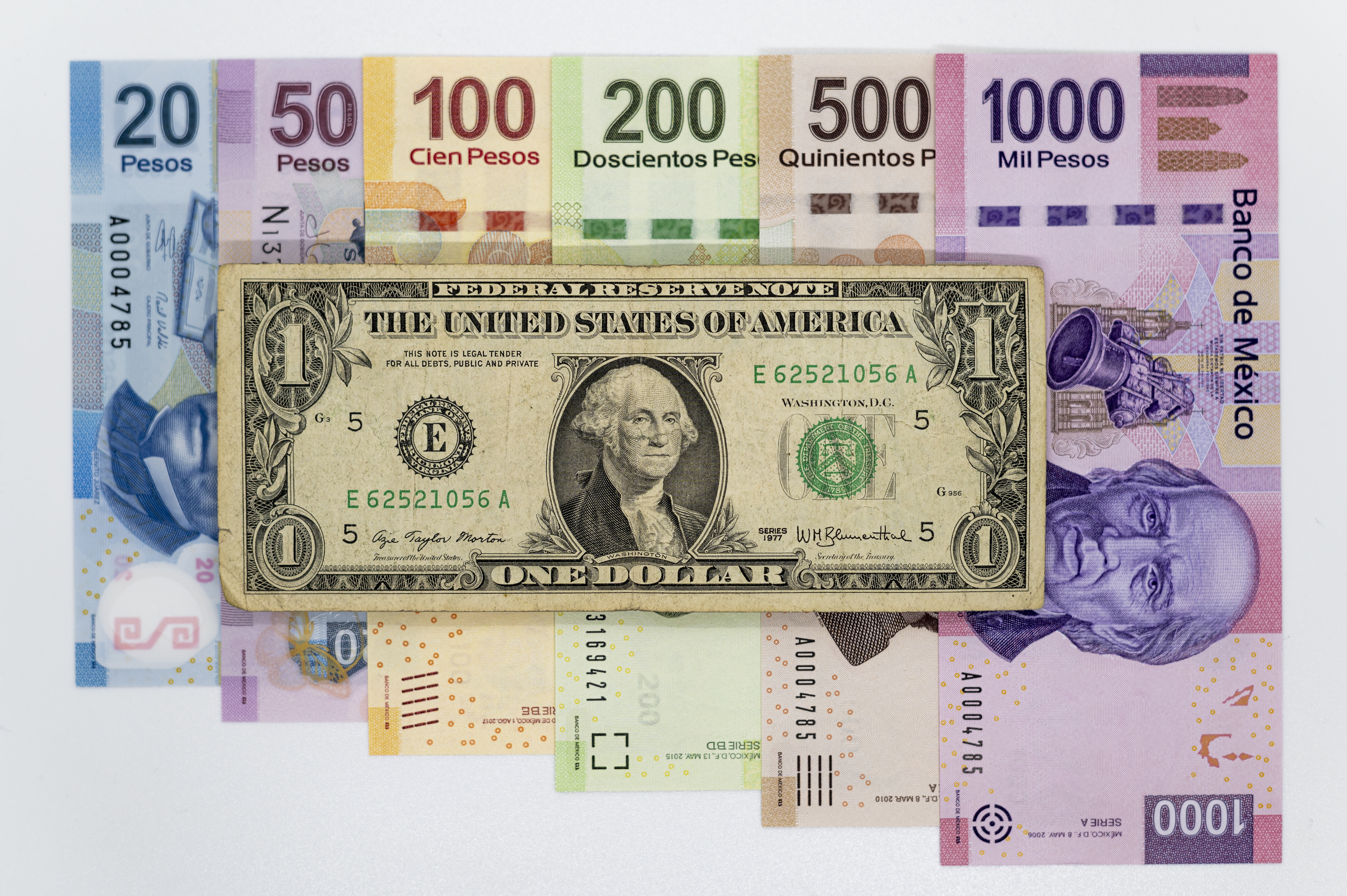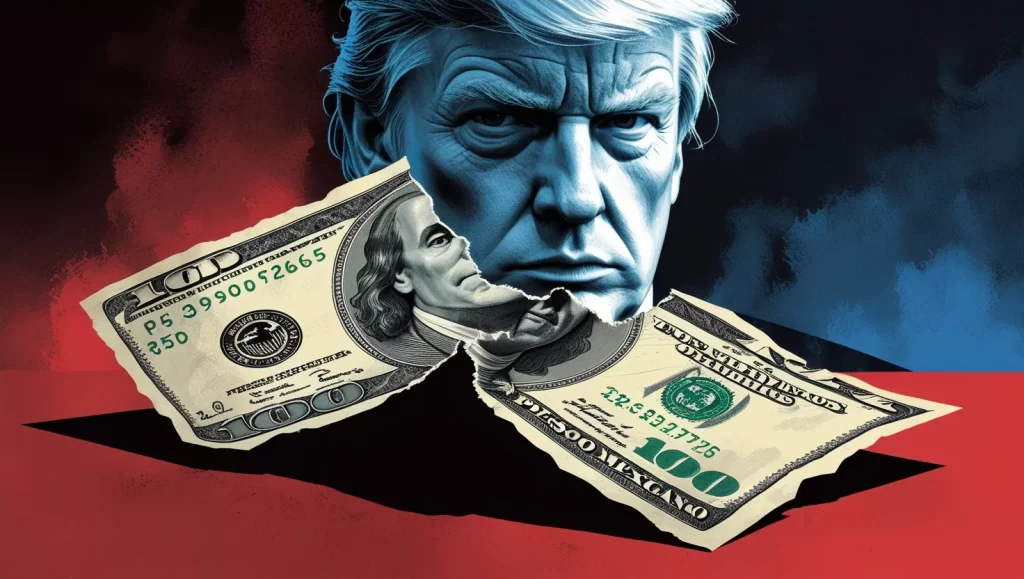Trump’s Tariff Threats Impact Dollar USD a Peso Mexicano Exchange Rate-The exchange rate between the dolar USD a peso mexicano is one of the most closely watched currency pairs in the world. It reflects the value of the U.S. Dollar against the Mexican Peso, two currencies that play a significant role in global trade, particularly within the North American market. Recently, former President Donald Trump’s tariff threats have had a notable impact on this exchange rate, creating volatility in the financial markets. This article explores how Trump’s tariff policies and threats have affected the dolar USD a peso mexicano exchange rate, the broader market implications, and what it means for businesses and investors.
The Background: Trump’s Tariff Policies and Trade Tensions
During his tenure as President of the United States, Donald Trump implemented several tariff measures aimed at reducing the U.S. trade deficit and pressuring foreign countries to adopt fairer trade practices. These tariffs often targeted countries such as China, the European Union, and Mexico. Trump’s administration sought to renegotiate trade deals, arguing that existing agreements were unfair to the U.S.
One of the most prominent issues in U.S.-Mexico trade relations during Trump’s presidency was the tariff threat on Mexican imports. In 2019, Trump threatened to impose a 5% tariff on all Mexican goods if the Mexican government did not take immediate action to curb the flow of illegal immigration into the U.S. This escalated tensions between the two countries, resulting in significant uncertainty regarding the dollar USD a peso mexicano exchange rate.
The Immediate Impact on the Dollar USD a Peso Mexicano Exchange Rate

When Trump made his tariff threats, the dollar USD a peso mexicano exchange rate experienced immediate fluctuations. The uncertainty surrounding the implementation of tariffs, combined with fears of a trade war, led to a sharp depreciation of the Mexican Peso. As the U.S. Dollar strengthened, the Peso weakened, driving up the cost of Mexican goods for U.S. consumers and vice versa.
This sudden surge in the dollar USD a peso mexicano exchange rate highlighted the sensitive nature of currency markets, especially in the context of international trade tensions. For investors, this volatility was both an opportunity and a risk, as the value of the Peso fluctuated dramatically in response to tariff-related news.
Tariffs and Investor Sentiment
Investor sentiment plays a crucial role in determining the value of currencies. When Trump’s administration made tariff threats, markets reacted swiftly. In times of uncertainty, investors often turn to the U.S. Dollar as a safe-haven currency, which resulted in a stronger dollar USD a peso mexicano exchange rate. As news of tariffs spread, demand for the Dollar rose, while the Peso became less attractive due to fears of reduced trade with the U.S.
The threat of tariffs also had broader implications for businesses. Companies that rely on cross-border trade, particularly between the U.S. and Mexico, faced significant challenges in managing currency risk. The volatility in the dollar USD a peso mexicano exchange rate meant that businesses had to hedge their currency exposure, leading to increased costs in managing foreign exchange risks. (Read More: Dollar US to Rupee: Latest Exchange Rate and Market Trends)
The Broader Economic Impact of Trump’s Tariff Threats

Trump’s tariff threats were not just about the dollar USD a peso mexicano exchange rate; they also had far-reaching consequences for the broader U.S. and Mexican economies. While the tariffs aimed to pressure Mexico into complying with U.S. demands on immigration, they also disrupted trade relations and created economic uncertainty in both countries.
U.S. Impact: Higher Costs for Consumers and Businesses
One of the direct impacts of tariff threats was the increase in the price of imported goods from Mexico. Items like cars, electronics, and agricultural products, which the U.S. imports from its southern neighbor, became more expensive due to the tariffs. This had a ripple effect on U.S. consumers, who faced higher prices for everyday goods.
At the same time, U.S. businesses that relied on Mexican exports or imports had to adjust their operations. Companies that did business in Mexico or relied on Mexican supply chains faced higher costs and potential disruptions. These challenges further fueled concerns about the future direction of the dollar USD a peso mexicano exchange rate and trade relations between the two countries.
Mexico’s Economic Strain
For Mexico, Trump’s tariff threats posed a significant economic challenge. Mexico is one of the largest trading partners of the U.S., and any disruption in trade relations had the potential to harm its economy. The dollar USD a peso mexicano exchange rate became a key barometer for the Mexican economy’s health. A weakened Peso made it more difficult for Mexico to import goods, raising the cost of living for consumers and increasing inflation.
In addition to the tariff threats, Trump’s rhetoric surrounding trade with Mexico added to the uncertainty. Mexican investors and businesses, already grappling with the volatility of the Peso, found themselves in a difficult position. Many sought to minimize risk by moving assets to more stable markets, further driving the depreciation of the Peso.
Negotiations and the USMCA Agreement: A Turning Point
In the face of mounting pressure, the U.S., Mexico, and Canada entered into negotiations to modernize the North American Free Trade Agreement (NAFTA). These negotiations led to the creation of the United States-Mexico-Canada Agreement (USMCA), which was signed in 2018 and came into effect in 2020.
The USMCA aimed to address many of the issues raised by Trump’s tariff policies, including labor standards, intellectual property protections, and agricultural trade. While the agreement helped ease some of the tensions between the U.S. and Mexico, the dollar USD a peso mexicano exchange rate remained volatile due to ongoing concerns about the future of trade relations.
The USMCA provided a framework for continued trade between the U.S. and Mexico, reducing some of the fears about the potential for a full-blown trade war. However, the legacy of Trump’s tariff threats left an indelible mark on the dollar USD a peso mexicano exchange rate, creating long-term uncertainty about the future of U.S.-Mexico trade relations. (Read More: US Dollar Strengthens: What It Means for the Global Economy in 2024)
Long-Term Effects on the Dollar USD a Peso Mexicano Exchange Rate

While Trump’s tariff threats and subsequent trade negotiations may have eased short-term volatility in the dollar USD a peso mexicano exchange rate, the long-term effects are still being felt. The Mexican Peso remains sensitive to shifts in U.S. trade policy, and future tariff threats or changes in U.S. political leadership could reignite concerns about the stability of the Peso.
The dolar USD a peso mexicano exchange rate is also influenced by broader global factors, such as economic growth, inflation rates, and geopolitical developments. While tariffs may not be the primary factor affecting the exchange rate in the future, the legacy of trade tensions between the U.S. and Mexico is likely to continue shaping investor sentiment and currency movements. (Read More: Dollar US to Rupee Hits New High: What’s Driving the Change?)
Future Outlook for the Dollar USD a Peso Mexicano Exchange Rate
The future of the dollar USD a peso mexicano exchange rate will depend on a variety of factors, including the economic policies of the Biden administration, trade relations with Mexico, and broader global economic conditions. If U.S.-Mexico relations remain stable and trade continues to flow smoothly, the Peso could strengthen over time. However, any signs of renewed tariff threats or disruptions in trade could lead to increased volatility in the exchange rate.
In the end, while Trump’s tariff threats created immediate volatility in the dollar USD a peso mexicano exchange rate, the relationship between the two currencies will continue to be influenced by ongoing political, economic, and trade factors. Investors and businesses will need to remain vigilant, monitoring these factors as they look to navigate the complexities of the currency market.











More Stories
Angel Investors What Is and Why It Matters
The Average Income from Airbnb: How Much Can Hosts Really Make?
6 Ways To Draw Lifetime Income From An Annuity